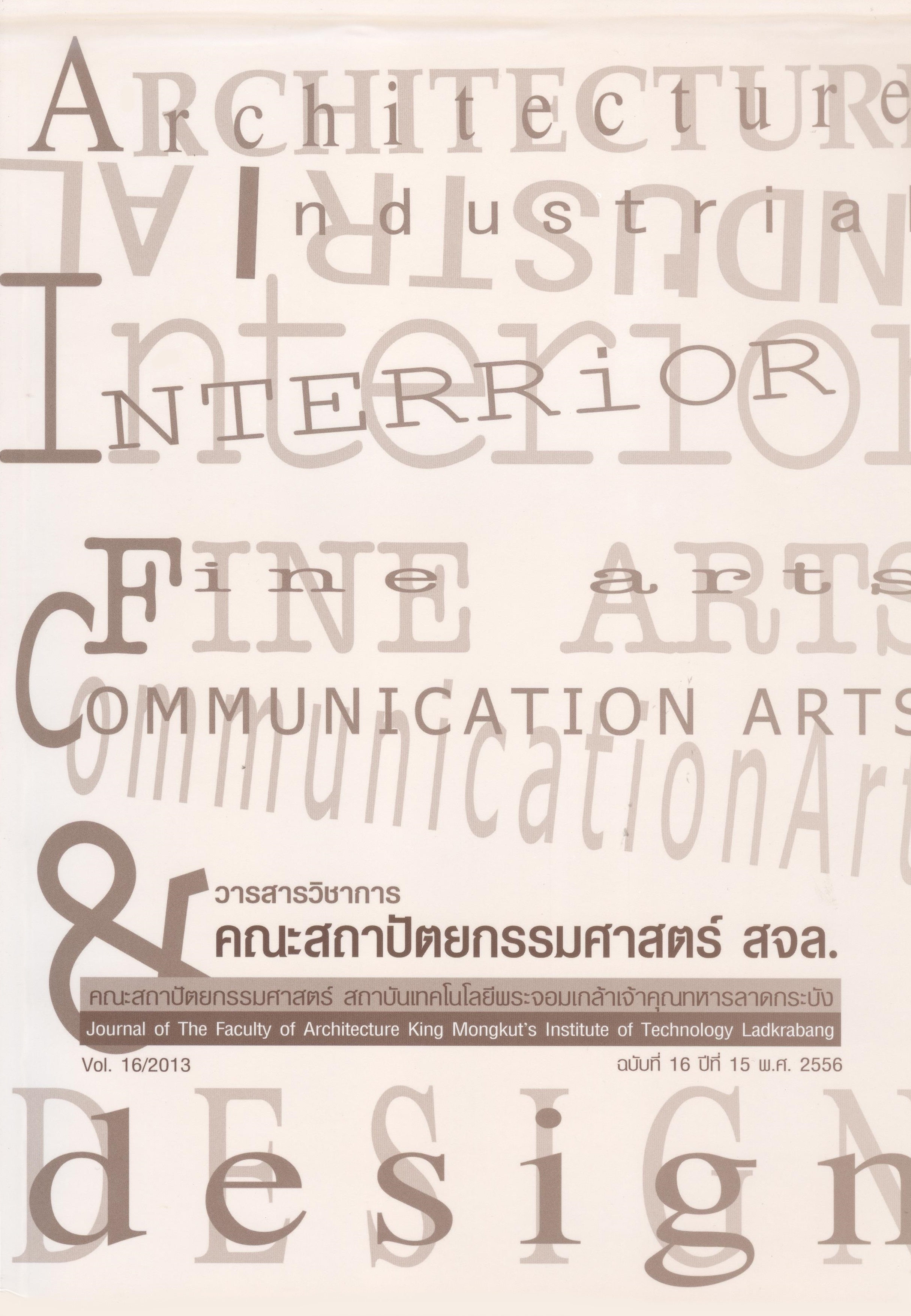การออกแบบกระบะทรายจากวัสดุกากชานอ้อยเพื่อเก็บสิ่งปฏิกูลจากแมวในที่พักอาศัย (Designlitter Tray from Bagasse to Keep the Filth from Cat in Residential)
Main Article Content
Abstract
บทคัดย่อ
งานวิจัยนี้นำเสนอถึงแนวทางการใช้วัสดุกากชานอ้อยในการออกแบบกระบะทราย เพื่อจัดเก็บสิ่งปฏิกูลจากแมวในที่พักอาศัย ซึ่งเป็นวัสดุที่สามารถย่อยสลายได้อย่างเป็นมิตรกับสิ่งแวดล้อม หลักการออกแบบเน้นการออกแบบเพื่อการผลิตและประเมินโดยผู้ที่มีความเชี่ยวชาญด้านการออกแบบผลิตภัณฑ์ นอกจากนี้ยังประเมินความพึงพอใจของผู้เลี้ยงแมวต่อการออกแบบกระบะทรายโดยแบ่งออกเป็น 2 ส่วน
ส่วนที่ 1 ได้คัดเลือกกลุ่มประชากรจากการสุ่มแบบเจาะจงผู้ที่มีความเชี่ยวชาญด้านการออกแบบผลิตภัณฑ์ จำนวน 5 คน เพื่อประเมินความคิดเห็นเกี่ยวกับการออกแบบกระบะทรายจากวัสดุกากชานอ้อยเพื่อจัดเก็บสิ่งปฏิกูลจากแมวในที่พักอาศัย และการจัดลำดับความสำคัญขององค์ประกอบการออกแบบตามลำดับค่าเฉลี่ย และค่าส่วนเบี่ยงเบนมาตรฐานพบว่าผลการพิจารณาความเห็นด้วยมากที่สุดคือ แบบร่างของกระบะทรายถาดคู่ ซึ่งมีค่าเฉลี่ยความคิดเห็นที่ 3.97 และค่าความเบี่ยงเบน 0.74 โดยมีลำดับการออกแบบเกี่ยวกับโครงสร้างการใช้งาน วัสดุ การออกแบบแม่พิมพ์ ลดความซับซ้อนของผลิตภัณฑ์และส่วนประกอบอื่น ๆ ที่อาจทำให้เกิดฉีกขาดของชิ้นงานระหว่างการใช้งาน
ส่วนที่ 2 เป็นการประเมินความพึงพอใจของผู้เลี้ยงแมวต่อกระบะทรายสำหรับจัดเก็บสิ่งปฏิกูลจากแมวในที่พักอาศัยจำนวน 100 คน ทางด้านการใช้งาน การจัดเก็บ และความสวยงามโดยใช้การวิเคราะห์ทางสถิติเป็นค่าร้อยละ ค่าเฉลี่ย (X)สรุปการประเมิน คือ กลุ่มตัวอย่างพึงพอใจในความเป็นมิตรกับสิ่งแวดล้อมอันดับแรก คือ ให้ความสำคัญกับปัจจัยด้านใช้วัสดุธรรมชาติ มากที่สุด อันดับที่สองให้ความสำคัญกับปัจจัยด้านประโยชน์ใช้สอย อันดับที่สามให้ความสำคัญกับปัจจัยด้านการลดกลิ่นสิ่งปฏิกูลตามลำดับค่าเบี่ยงเบนมาตรฐาน (S.D.) พบว่ามีความพึงพอใจต่อการออกแบบกระบะทรายจากกากชานอ้อยแบบถาดคู่มากกว่าอย่างมีนัยสำคัญที่ 0.05 โดยมีค่าเฉลี่ยความคิดเห็นอยู่ที่ 4.60 การออกแบบนี้จะเป็นแนวทางในการเลือกในการใช้วัสดุเหลือใช้จากการเกษตรไปสู่การออกแบบให้กับกลุ่มลูกค้า และพัฒนาให้ผู้ผลิตผู้ประกอบการนักออกแบบเป็นแนวทางศึกษารวมทั้งผู้ที่สนใจนำไปประยุกต์ใช้ในการออกแบบต่อไป
Abstract
This research is the experimental study of which the objective is to design of the litter tray from sugarcanebagasses to keep the cat’ filth in the residence, and to study cat owner’s satisfaction of using the litter tray from sugarcane bagasses. The research will study the basis need behavior of keeping filth from cat’s owner. The principle of design aims to produce and evaluate by production design expert. In addition, this research also evaluates the cat owner’s satisfaction of designing the sand tray. Then, this study is divided into 2 sections.
The first section, the sample is 5 product designers who evaluate the shape, beauty, advantange of use including the process of th litter tray made of sugarcane bagasses production. The priority of design components includes convenience to use, structure, strength, material property and fineness. The results found that the product designers average satisfaction level in design score; in disposable property is 3.97 with 0.74 standard deviation. The priority of design components includes convenience to use, structure, strength, material property and fineness
Section 2 is about to evaluate 100 cat owners’ satisfaction of the sand tray for keeping the cat’s filth in the residence by statistical analysis with percentage, mean (X), standard deviation (S.D.) and ANOVA comparison test. The results found that the sample’s average satisfaction level in design score; in disposable property is 4.60 with 75% confidence interval. Therefore, the researcher proposes the design of cat litter tray from sugarcane bagasses as the model. This design is an alternative to apply for agricultural product for customer group. This learning and developing way in designing product further for producers, entrepreneurs, designers and interested people.Article Details
This work is licensed under a Creative Commons Attribution-NonCommercial-ShareAlike 4.0 International License.
Copyright Transfer Statement
The copyright of this article is transferred to Journal of The Faculty of Architecture King Mongkut's Institute of Technology Ladkrabang with effect if and when the article is accepted for publication. The copyright transfer covers the exclusive right to reproduce and distribute the article, including reprints, translations, photographic reproductions, electronic form (offline, online) or any other reproductions of similar nature.
The author warrants that this contribution is original and that he/she has full power to make this grant. The author signs for and accepts responsibility for releasing this material on behalf of any and all co-authors.


